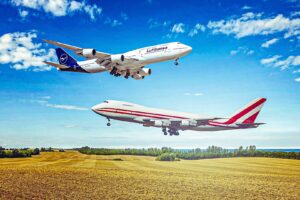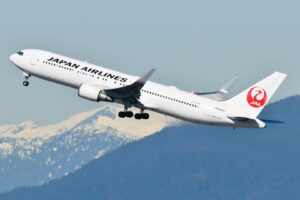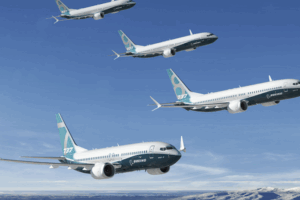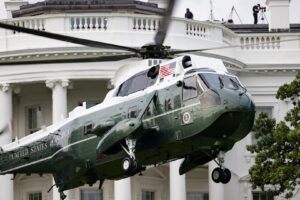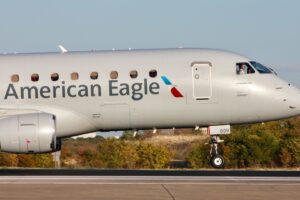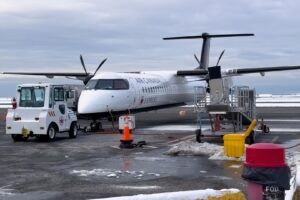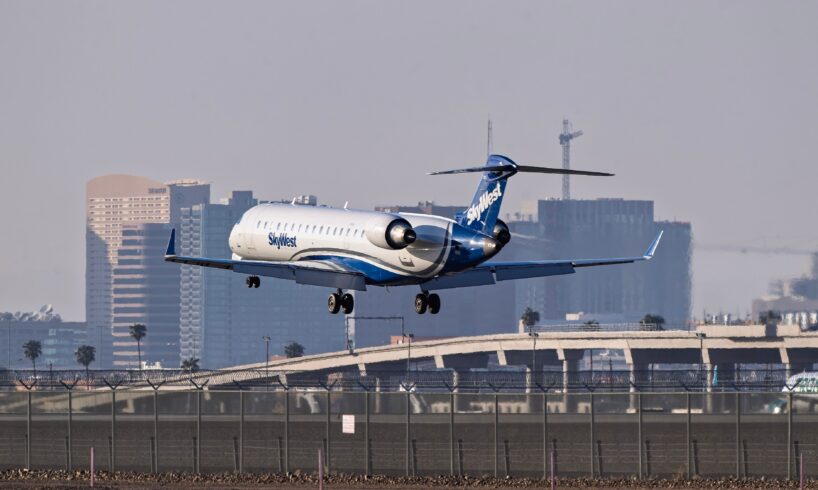
The United States Regional Airlines Association (RAA), on behalf of its member airlines, has asked the Federal government for an exemption related to the requirements for an installed physical secondary barriers (IPSB).
In 2023, the Federal Aviation Administration (FAA) issued a rule that mandated that all aircraft that are operated by airlines flying under Part 121 regulations and are built after August 25, 2025, would need to have a second physical barrier in front of the flight deck. The IPSB would be used whenever the actual cockpit doors are open.
Circumstances Outside Of US Regional Airlines’ Control
Photo: BUI LE MANH HUNG | Shutterstock
In a filing on June 11, the RAA argued that, due to circumstances of the association’s member airlines’ control, which raises the possibility of putting regional carriers out of compliance with regulatory requirements of the IPSB rule for newly built aircraft, it was seeking a 24-month, or two-year exemption, for the regulation.
According to the RAA, while it is committed to maintaining the highest level of safety and security, as well as meeting all the FAA’s regulatory requirements, relief was necessary to avoid a significant impact on the traveling public and airlines by having these functional aircraft left unused.
“Specifically, we seek an exemption for a 24-month period so that impacted RAA members can develop and accomplish the necessary training of their flight crew before being subject to the IPSB operating requirements.”
Using Aircraft Without Secondary Barriers And Flying With Crews Who Are Not Trained On IPSBs
Photo: Phatranist Kerddaeng | Shutterstock
The RAA noted that if the FAA does grant an exemption to its member airlines, they would be able to continue flying aircraft without an IPSB, or allow US regional carriers’ flight crews to operate regional jets with ISPBs, yet without having been trained to use the secondary barriers. During the two-year period, the association promised that “existing procedures will continue to be used, maintaining an equivalent level of safety and security.”
Per the association, there are four key challenges that forced the RAA to seek an exemption from the rule, which was finalized in 2023. First, the association highlighted the lack of certification and documentation from original equipment manufacturers (OEMs), who have not received FAA approval for any IPSBs. Second, the rule has an “impossible” training timeline since developing and receiving approval for training can take up to 24 months. Third, the training of pilots and flight attendants could affect thousands of flight crew members, while limiting flight crew assignments based on IPSB training could be detrimental operationally, and lastly, “current security processes have demonstrated their effectiveness and provide an equivalent level of safety.”
The RAA is not the only stakeholder that has asked for an extension. In May, Airlines for America (A4A), which unites several of the largest carriers in the US, asked the FAA to delay the implementation of the secondary physical barrier “until operators have completed the required training of all subject personnel.” During the requested two-year exemption period, airlines would continue maintaining an “equivalent level of safety and security.” The A4A requested that the regulator provide a decision by no later than June 25.
Related
Secondary Cockpit Barriers Finally Become Mandatory On Commercial Aircraft More Than 20 Years After 9/11
Retrofitting current aircraft could take between five and six years.
Pushing Back Against Exemption Requests
Photo: ALPA
However, the Air Line Pilots Association, International (ALPA) has pushed back against the A4A, and its request to delay the IPSB rulemaking for two years. In its statement on June 3, Jason Ambrosi, the President of ALPA, representing over 79,000 pilots in Canada and the US, said that the union has long advocated for a secondary physical barrier and has been proud to lead the charge to implement the IPSB on commercial aircraft in the US.
“The airlines have had two years to implement these requirements, yet they are now requesting an extension for the same time granted to them by the final rule,” Ambrosi stated, adding that the union was urging the FAA to reject the A4A’s request.
The FAA finalized the IPSB rule for Part 121 operators, or commercial airlines flying under the jurisdiction of the US, in June 2023. At the time, the regulator said that the final rule implemented a section from the FAA Reauthorization Act of 2018, mandating an IPSB that will be used – closed and locked – “whenever the flightdeck door is opened while the airplane is in flight.” The FAA estimated that the costs to purchase and install an IPSB would be around $35,000, and, with additional training expenses, the present value costs of this rule are $236.5 million at a 7% discount rate or $505 million at a 3% discount rate.

